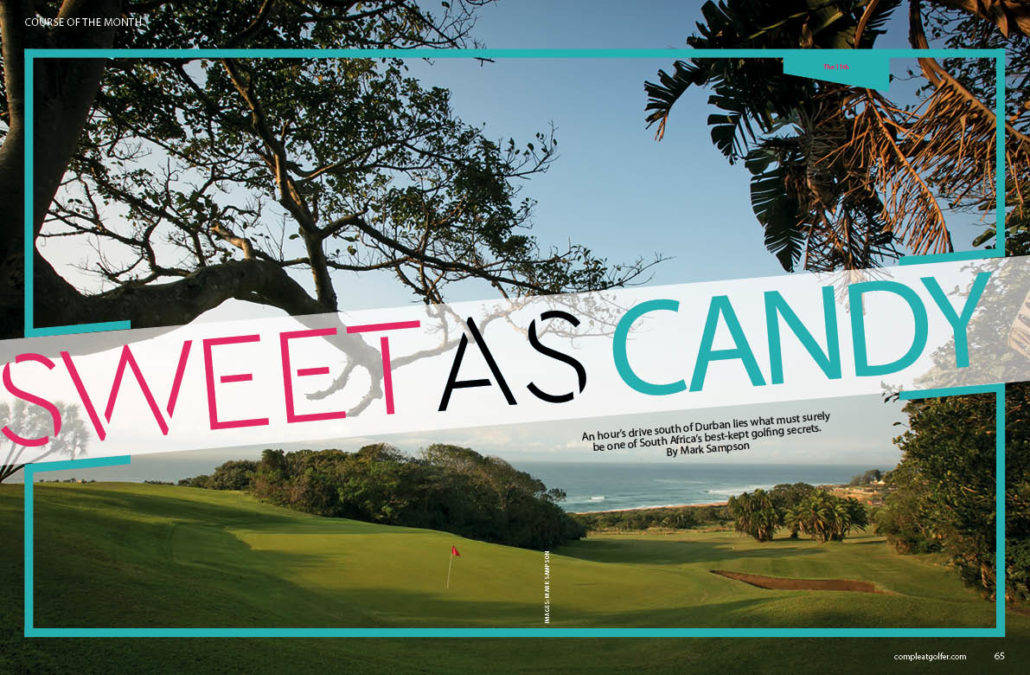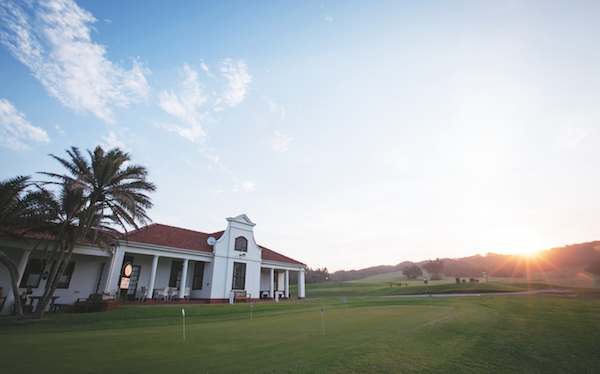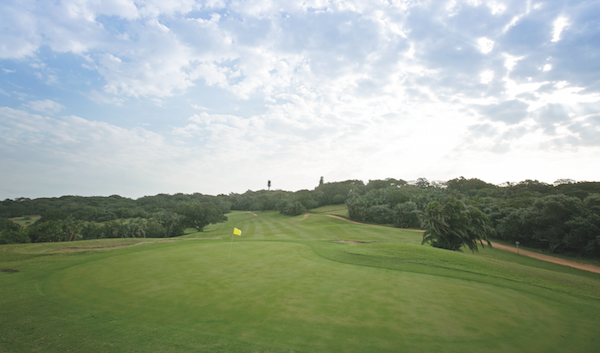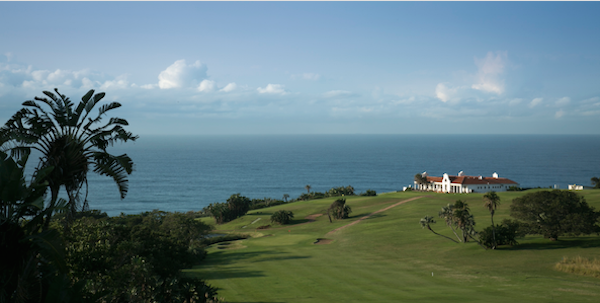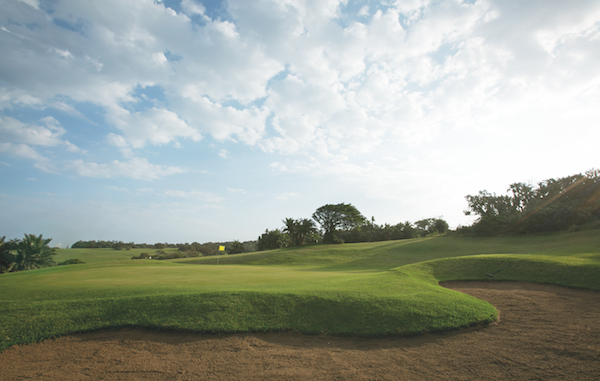An hour’s drive south of Durban lies what must surely be one of South Africa’s best-kept golfing secrets, writes MARK SAMPSON.
You’ll find Umdoni Park Golf Club in a nature reserve hugging the Indian Ocean. With those impressive parameters, the mood is set for a great round of golf.
Umdoni is covered in coastal vegetation, liberally sprinkled with umdoni trees (Syzygium cordatum), which give the areaits name.
On entering the park through a discreet side road en route to Pennington beach, the thick bush hints at things to come. As the road rises, the course suddenly appears among the meandering hills, with the stark blue waters of the Indian Ocean completing the stunning landscape. It is a moment not easily forgotten by visitors.
Umdoni Park’s origins date back to 1918 when sugar tycoon and MP Sir Frank Reynolds purchased the land and set out developing the golf course. At the same time Sir Frank began building a ‘cottage’ for his good friend, General Louis Botha, the first prime minister of the Union of South Africa, as a gift. The general died before taking up residence, although his wife lived there until 1937. Botha House was then used by South African prime ministers through the years but is now a luxurious guest house.
The first nine holes were completed in 1921 and the full 18 were in play nine years later. The clubhouse, completed in 1927, was recently revamped and now boasts one of the best views in the country, overlooking the ocean. (Make sure to keep an eye out for the dassies climbing and eating the local aloes.)
This is a course of contrasts. The front nine is a lot more open, with views of the ocean from all holes, while the back nine is considerably more difficult, requiring accuracy as it makes its way inland, navigating indigenous bush. A number of holes may tempt the long hitter, but a wayward shot will not be recovered.
Umdoni Park is a relatively short course at 5 592m, although the wind and continual changes in elevation make club selection difficult. The nature of the course is revealed by the par-five 1st. Although uphill, the 402m hole is easily reached in two, but the small green makes an elusive target, with the surrounding bush likely to turn a possible birdie into a disappointing bogey.
The 2nd comes back down the hill in the form of a right-to-left dogleg with bush running down its right flank. The small green makes for a tough target. The first short hole is up next and, at just 116m, is an easy 9-iron for most. But you need to clear the water hazard to reach the large two-tiered green. Landing on the wrong tier will present you with a difficult two-putt.
The uphill 4th is quite long at 344m to a raised green. A biggish putting surface and a massive umdoni tree protecting it give it the low rating of four.
The following two par-four holes are genuine birdie opportunities for the better golfer. The 5th is a short hole (275m), but it is important to stay on the fairway, which slopes from left to right. A short-iron to a flat green, protected by bunkers front left and right, should leave you with a reasonable birdie putt.
The downhill 6th is also straightforward. A good drive will leave a short second to a flat green and another birdie opportunity. In windy conditions, though, the narrow green becomes a much more difficult proposition.
The 7th is a 155m par three protected by two massive bunkers on either side. When the wind is up the surface can be difficult to find. The 8th is another short par four with very little danger.
On the 9th tee, you feel like you are standing on the beach. With the waves crashing beside you, the fairway dips down before rising up to the green and towards the elegant Cape Dutch-style clubhouse. Bushes on the right and out-of-bounds to the left help to make this a stroke six. The approach, often into the southerly wind, is easily misjudged due to the steep incline and deceptive gusts, which are disguised by the protected fairway.
The back nine is like playing a different course in a coastal forest. It starts off with a short par five followed by an incredibly tight par four. A strong dogleg left with a steep incline to the green makes the 11th the third-toughest hole on the course.
The steep climb continues on the par-three 12th. Again, it’s very short at 110m, but there’s a certain intimidation factor in two huge trees protecting the green. From the tee, the surface looks small, but this is not the case and you need to take enough club to reach it.
The par-five 13th is a tight hole with the fairway making a sharp dogleg to the right as the bush encroaches on the fairway. The green is protected by a water hazard and some palms are positioned short. Any inaccuracy on this hole will result in a lost ball.
Another two short par fours are up next where a good drive will leave nothing more than an 8-iron to the green. The 16th is a picture-perfect short hole. Carved out of the bush, the tee box offers an incredible view of the park as it makes its way to the ocean. Its massive drop and exposure to the wind make club selection difficult. Adding to this, the narrow green is protected by bunkers on either side of its entrance.
The stroke one 17th is an uphill monster. Massive umdonis line the fairway as it rises up to the small green. At 385m, its length and tight fairway are its primary protection.
Your round ends with a thought-provoking par five of 502m. See our insert from club captain Tony Hallett on page 71 on how to conquer it.
– This article first appeared in the January 2017 issue of Compleat Golfer magazine
RATES
Non-affiliated visitors 18 holes: R300
Students 18 holes: R165
Golf cart: R250
DISTANCES
(FROM, ESTIMATED)
Durban: 80km
East London: 592km Johannesburg: 630km Pretoria: 687km
Bloemfontein: 698km
Port Elizabeth: 843km
Cape Town: 1 536km
BY ROAD
The course is 80km south of Durban. From the N2 take the Pennington R102 off ramp. As you come down towards Pennington take a right into Pennington Drive and another right into Minerva Road. You will come to a boom, which is the entrance to the park.
ADDRESS
Minerva Road, Pennington
CONTACT
Club: 039 975 1615
Email: [email protected]
www.umdonipark.com/umdoni-golf-club/


